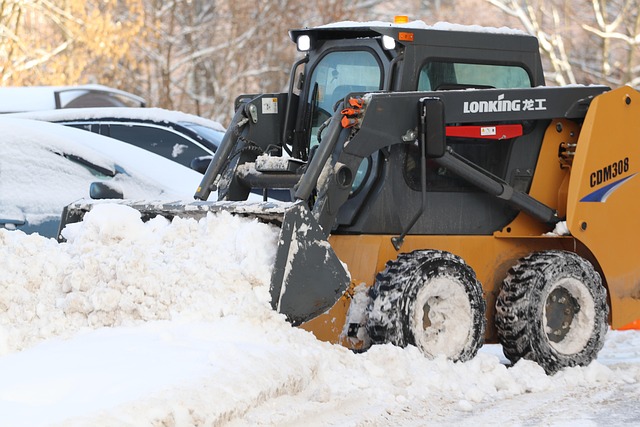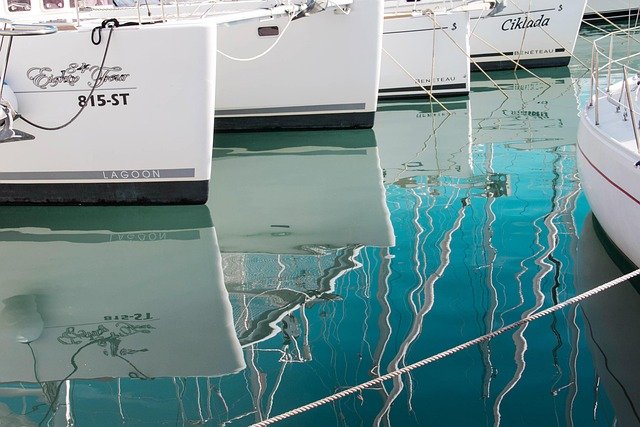Bank-Owned Skid Steer Loaders & Excavators Explained
When financial institutions repossess heavy equipment due to loan defaults, these machines often enter the secondary market at reduced prices. Bank-owned skid steer loaders and excavators represent a unique opportunity for contractors, landscapers, and construction businesses seeking quality equipment without the premium price tag. Understanding how these assets become available, their condition, and the purchasing process can help buyers make informed decisions in the heavy equipment market.

Bank repossessions occur when borrowers fail to meet their loan obligations, leading financial institutions to reclaim financed equipment. These repossessed machines, including skid steer loaders and excavators, are then sold to recover outstanding debts. The process creates opportunities for savvy buyers to acquire functional heavy equipment at competitive prices, though it requires careful evaluation and due diligence.
The secondary market for bank-owned construction equipment has grown significantly as lenders seek efficient ways to liquidate assets. Unlike traditional dealership purchases, these transactions involve unique considerations regarding equipment history, condition assessment, and financing options. Buyers who understand the nuances of this market can find substantial value while avoiding common pitfalls.
What Are Bank-Owned Skid Steer Loaders & Excavators?
Bank-owned equipment refers to machinery that has been repossessed by lending institutions after borrowers defaulted on their financing agreements. Skid steer loaders, compact machines known for their maneuverability in tight spaces, and excavators, versatile digging machines used across construction sites, frequently appear in these repossession inventories.
These machines typically range from nearly new models with minimal operating hours to older units that have seen considerable use. Financial institutions acquire them through legal repossession processes and aim to sell them quickly to minimize storage costs and recover loan balances. The equipment may come from failed businesses, individual contractors who couldn’t maintain payments, or companies downsizing their fleets.
Banks generally sell these assets through auctions, specialized equipment liquidation companies, or direct sales programs. The machines are sold in as-is condition, meaning buyers assume responsibility for any repairs or maintenance needed after purchase. This differs from dealership sales where warranties and service agreements are standard offerings.
Advantages of Purchasing Bank Repossessed Skid Steer Loaders & Excavators
The primary benefit of buying bank-owned equipment is the potential for significant cost savings. Repossessed machinery typically sells for 20 to 40 percent below retail market value, depending on condition, age, and demand. This pricing structure allows smaller contractors to access equipment that might otherwise exceed their budgets.
Buyers can often find relatively recent models with low operating hours among repossessed inventory. When businesses fail shortly after equipment purchases, banks may repossess machines that are essentially still breaking in. These units offer modern features and technology at substantial discounts compared to new equipment.
The variety available through bank sales and auctions provides options across different brands, sizes, and specifications. Rather than being limited to what a single dealership stocks, buyers can access equipment from multiple sources simultaneously. This increased selection improves the chances of finding machines that precisely match operational needs.
Another advantage involves faster depreciation cycles already absorbed by previous owners. New equipment loses value rapidly in the first years of ownership, but repossessed machines have already experienced this initial depreciation. Buyers benefit from more stable resale values if they later decide to upgrade or change their equipment lineup.
Cost Considerations and Market Examples
Pricing for bank-owned skid steer loaders and excavators varies widely based on factors including machine age, hours of operation, manufacturer, and current market conditions. Understanding typical price ranges helps buyers evaluate whether specific opportunities represent genuine value.
| Equipment Type | Typical Age Range | Estimated Price Range | Comparable New Price |
|---|---|---|---|
| Compact Skid Steer Loader | 3-7 years | $15,000 - $35,000 | $40,000 - $65,000 |
| Mid-Size Skid Steer Loader | 4-8 years | $25,000 - $45,000 | $55,000 - $85,000 |
| Mini Excavator (under 6 tons) | 3-6 years | $20,000 - $45,000 | $50,000 - $80,000 |
| Mid-Size Excavator (6-15 tons) | 4-9 years | $40,000 - $90,000 | $90,000 - $160,000 |
| Large Excavator (over 15 tons) | 5-10 years | $80,000 - $180,000 | $180,000 - $350,000 |
Prices, rates, or cost estimates mentioned in this article are based on the latest available information but may change over time. Independent research is advised before making financial decisions.
How to Purchase Bank-Owned Skid Steer Loaders & Excavators
The purchasing process begins with identifying available inventory through multiple channels. Banks often partner with auction houses like Ritchie Bros, IronPlanet, or regional equipment auctions to handle sales. Online platforms have expanded access, allowing buyers to bid remotely on equipment located across different regions.
Direct contact with financial institutions that handle commercial equipment loans can reveal upcoming sales or available inventory. Some banks maintain lists of interested buyers and provide advance notice before public auctions. Building relationships with asset recovery departments at regional banks creates opportunities to learn about equipment before it reaches the broader market.
Thorough inspection remains critical when evaluating repossessed equipment. Whenever possible, physically examine machines or hire qualified mechanics to assess condition. Check operating hours, hydraulic systems, engine performance, and structural integrity. Request maintenance records if available, though repossessed equipment often lacks complete service histories.
Financing bank-owned equipment requires different approaches than traditional dealership purchases. Some buyers pay cash to strengthen their negotiating position and simplify transactions. Others secure financing through equipment lenders who specialize in used machinery, though interest rates may be higher than new equipment loans due to increased risk factors.
Evaluating Equipment Condition and Value
Successful purchases depend on accurately assessing machine condition relative to asking prices. Operating hours provide initial guidance, with lower hours generally indicating less wear. However, maintenance quality matters more than hours alone. A well-maintained machine with 3,000 hours often performs better than a neglected unit with 1,500 hours.
Inspect critical components including engines, hydraulic systems, tracks or tires, buckets, and operator stations. Look for signs of fluid leaks, unusual wear patterns, or makeshift repairs that might indicate underlying problems. Test all functions during inspections, operating the equipment through its full range of movements and attachments.
Research market values for comparable equipment using online pricing guides, recent auction results, and dealer listings. This information establishes baseline expectations and helps identify whether specific opportunities represent fair value or potential problems. Be prepared to walk away from deals that don’t meet your criteria, as other opportunities will emerge.




